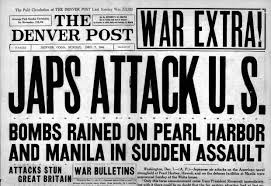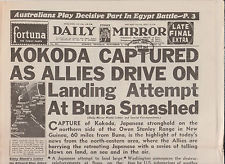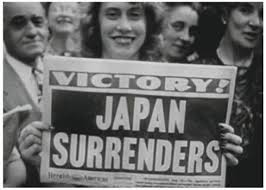‘We are at war with Japan’.
Prime Minister John Curtin, Sydney Morning Herald, 1941
In 1933 Colonel Vernon Sturdee, director of military operations and intelligence at Army Headquarters, warned that Japan would pose the major threat to Australian security.
He predicted:
‘the Japanese would act quickly, they would all be regulars, fully trained and equipped for the operations, and fanatics who like dying in battle, whilst our troops would consist mainly of civilians, hastily thrown together on mobilisation, with very little training, short of artillery and possibly of gun ammunition.’
Our most eminent military historian, Professor David Horner, wrote a damning indictment of our political leadership in his book ‘Crisis of Command’. According to Horner:
‘It is now generally agreed that the Australian defence policy between the wars and until the fall of Singapore was, at the best, naively optimistic, and at the worst, some might say, close to treason.’
The Japanese military were well prepared for their mission. For generations their national psyche had been conditioned by the State religion, Shinto, which inculcated respect for the Emperor, the Head of the Japanese family, and respect for one’s ancestors. All Japanese authorities – religious, educational, entertainment and the media – ceaselessly indoctrinated the population with the divinity of the Emperor and the divine nature of Japan’s expansionist role. To die for the Emperor on the field of battle was the most noble of all sacrifices.
Fanatical Kamikaze suicide pilots were an outcome of this extreme indoctrination.
The Japanese were thus a brutal occupier of foreign lands. Their invasion and occupation of China in 1937 was an omen of things to come. Civilian massacres, beheadings, public hangings and mass rape were committed against the Chinese population in the name of the Emperor. They did not subscribe to any conventions of war in their quest to expand their empire.
Despite this aggression Colonel Sturdee’s warning continued to go unheeded by Australia’s political leaders.
Our awakening came on the 7th December 1941 with Japan’s brazen attempt to sink the powerful United States Pacific Fleet anchored at Pearl Harbor in Honolulu.
Australia’s political chooks had come home to roost.
Our gallant Australian Imperial Forces were engaged in Britain’s war against Nazi Germany in Europe, Africa and the Middle East and our Militia .jpg) forces were stretched to the limit in meeting the demands of rapid mobilisation. Our only hope for stemming the Japanese advance lay with the British fortress in Singapore and small outposts in the South West Pacific.
forces were stretched to the limit in meeting the demands of rapid mobilisation. Our only hope for stemming the Japanese advance lay with the British fortress in Singapore and small outposts in the South West Pacific.
The Japanese attack on Pearl Harbor was quickly followed by invasions of the Philippines, Thailand, Burma and the Malayan Peninsula. Their strategy was to create an Asia-Pacific Co-Prosperity Sphere which aimed to eliminate Australia by either capturing its industrial centres or isolating it as an effective base for United States forces.
Only the Australian 8th Division, with two brigades in Malaya and one split between Ambon, Timor and Rabaul, stood as our frontline defence against any advance towards Australia. History records they were soon overwhelmed by Japanese forces who quickly dispelled the myth surrounding the impregnability of the Singapore fortress.
The fall of Singapore which resulted in the capture of 20,000 of our troops sent shockwaves through the Australian community. For the first time Australians experienced the fear of imminent invasion. We faced the loss of our homes and our country and many turned to prayer as a last resort for their safety. Prime Minister Curtin declared the ‘Battle for Australia’ had begun..jpg)
Four days later Darwin was bombed. This was followed up with bombing raids across our northern cities from Port Headland and Broome to Townsville. The Japanese navy sank ships off the East and West Coast. Curtin paced the floor of his office every night wondering where the main attack would come from – via our northern cities, the West coast or the East coast.
A Japanese victory in the Battle of the Java Sea and Sunda Strait prepared the way for a successful invasion of the Dutch East Indies and landings on the north coast of New Guinea.
Although the South West Pacific was not the highest priority for America due to a secret agreement between Prime Minister Winston Churchill and President Franklin Roosevelt to help Britain first, the forces allocated were sufficient to stall the Japanese offensive.
A Japanese invasion force steaming towards Port Moresby was thwarted in the Battle of the Coral Sea in May 1942 and defeated in the Battle of Midway the following month. Japanese military planners were then forced to reconsider their plans of expansion and to concentrate their forces on consolidating the territory they had already captured.
These plans included an expansion of their positions in New Guinea with an advance across the Owen Stanley Ranges from the northern beach-heads at Buna and Gona.
The scene was set for a bitter campaign in some of the most formidable jungle terrain on the planet. Heroic young Australians fighting with rifle, bayonet, grenade and fist  slipped and slithered, panted, plodded, sweated, bled, sickened, dropped and died in a sodden and crinkled hell of mountain and jungle and swamp before they turned the tide and forced the Japanese to retreat from the last line of defence at Ioribaiwa Ridge before recapturing Kokoda on 2nd November 1942.
slipped and slithered, panted, plodded, sweated, bled, sickened, dropped and died in a sodden and crinkled hell of mountain and jungle and swamp before they turned the tide and forced the Japanese to retreat from the last line of defence at Ioribaiwa Ridge before recapturing Kokoda on 2nd November 1942.
British Field Marshall and former Australian Governor General, Sir William Slim of Burma, later remarked that we should never forget that it was the Australians who finally broke the spell of invincibility of the Japanese with their victory at Milne Bay and on the Kokoda Trail.
The tide of the Pacific War had turned but many battles were to be fought at Salamaua, Lae, Wewak, Nadzab. the Huon Peninsula, the Finisterre Ranges and Guadalcanal before the Japanese finally surrendered at Wewak on 15th August 1945.
Lest We Forget

Recommended Reading:
PAPERS:Higher Command and the Kokoda Campaign Command in New Guinea John Curtin as war leader and Defence Minister Another look at Macarthur and Curtin Why the Japanese were in New Guinea Japanese Army Operations in the South West Pacific Area Milne Bay |
BOOKSThe Kokoda Trail – A History StrategyCrisis of Command: Australian Generalship and the Japanese Threat, 1942-1943 High Command: Australian & Allied Strategy 1939-1945 Inside the War Cabinet: Directing Australia’s War Effort 1939-45 Strategic Command The Great BetrayalAustralia’s Secret War’s Secret War: How unionists sabotaged our troops on Commanders and LeadersBlamey: The Biography of Field Marshal Sir Thomas Blamey The Commanders: Australian Military Leadership in the twentieth century General Vasey’s War Blamey: The Commander in Chief Warrior of Kokoda: A biography of Brigadier Arnold Potts The Odd Couple: Blamey and MacArthur at War Desert Sand, Jungle Lands: A biography of Major-General Ken Eather Kokoda Commander: A life of Major-General ‘Tubby’ Allen Paul Cullen: Citizen and Soldier Ralph Honner: Kokoda Hero The Architect of Kokoda: Bert Kienzle – the man who made the Kokoda Trail Kokoda Secret: Ian Hutchison – Australian Hero The Kokoda Trail CampaignRetreat from Kokoda: The Australian Campaign in New Guinea 1942 South-West Pacific Area - First Year: Kokoda to Wau The South West Pacific 1941-45 Blood & Iron: The Battle for Kokoda 1942 Kokoda to the Sea: A history of the 1942 campaign in Papua Kokoda To Kokoda Battalion Histories2/14th Australian Infantry Batallion War Dance: The history of the 2/3rd Australian Infantry Battalion The 1st at War: The story of the 2/1st Australian Infantry Battalion 1939-45 – The City of Sydney Regiment To Kokoda and Beyond: The story of the 39th Battalion 1942-1943 Port Moresby to Gona Beach: 3rd Australian Infantry Battalion 1942 Forever Forward: The History of the 2/31st Australian Battalion, 2nd AIF 1940-45 Men of Courage: A History of the 2/25th Australian Infantry Battalion, 1940-1945 All the Bull’s Men: No. 2 Australian Independent Company (2/2nd Commando Squadron) The Purple Devils: A History of the 2/6 Australian Commando Squadron From a Japanese PerspectiveThe Brave Japanese From a Hostile Shore: Australian and Japan at War in New Guinea The Pacific War Papers: Japanese Documents of World War 11 Japanese Army Operations in the South Pacific Area: New Britain and Papua Campaigns, 1942-43 The Path of Infinite Sorrow: Tha Japanese on the Kokoda Track Hirohito’s War: The Pacific War 1941-45 From an American PerspectiveThe Riddle of Macarthur The First South Pacific Campaign: Pacific Fleet Strategy, December 1941-June 1942 American Caesar: Douglas MacArthur 1880-1964 Goodbye Darkness: A Memoir of the Pacific War MacArthur Strikes Back: Decision at Buna: New Guinea 1942-1943 Macarthur: A biography From a Papua New Guinea PerspectiveGreen Shadows: A War History of the Papuan Infantry Battalion The New Guinea Volunteer Rifles NGVR 1939-1943: A History ANGAU: One Man’s Law The Third Force: ANGAU’s New Guinea War, 1942-46 Nameless Warriors: The Ben Moide Story
War CorrespondentsGreen Armour Damien Parer’s War War Cameraman: The story of Damien Parer Chester Wilmot Reports: Broadcasts that shaped World War 11 General ReadingThe Coastwatchers The Naked Island Hell and High Fever Fear Drive my Feet New Guinea 1942-44 Recollections of a Regimental Medical Officer The Last Bastion The Long Green Shore The Spell is Broken: Exploding the myth of Japanese invincibility – Milne Bay to Buna-Sanananda 1942-43 The Silent Men: Syria to Kokoda and on to Gona Kokoda Pacific Fury: How Australia and her allies defeated the Japanese Scourge Fortress Rabaul: The Battle for the Southwest Pacific January 1942-April 1943 Hell’s Battlefield: The Australians in New Guinea in World War 11 Australia 1942: In the Shadow of War Kokoda Air Strikes: Allied Air Forces in New Guinea, 1942 Australia 1944-45: Victory in the Pacific
|
Why Trek with Adventure Kokoda
Our primary goal is to lead you safely across the Kokoda Trail and ensure you have an unforgettable wartime historical and cultural experience.
Charlie has led 101 expeditions across the Kokoda Trail over the past 32 years.
He previously served in the Australian Army for 21 years. During this time he saw active service in Vietnam; was assigned to the joint Australian, New Zealand and British (ANZUK) Force in Singapore/ Malaysia from 1970-72, and as an exchange instructor in Airborne Logistics with the United States Army from 1977-78. He is a graduate of the Army Command and Staff College.
.jpg)